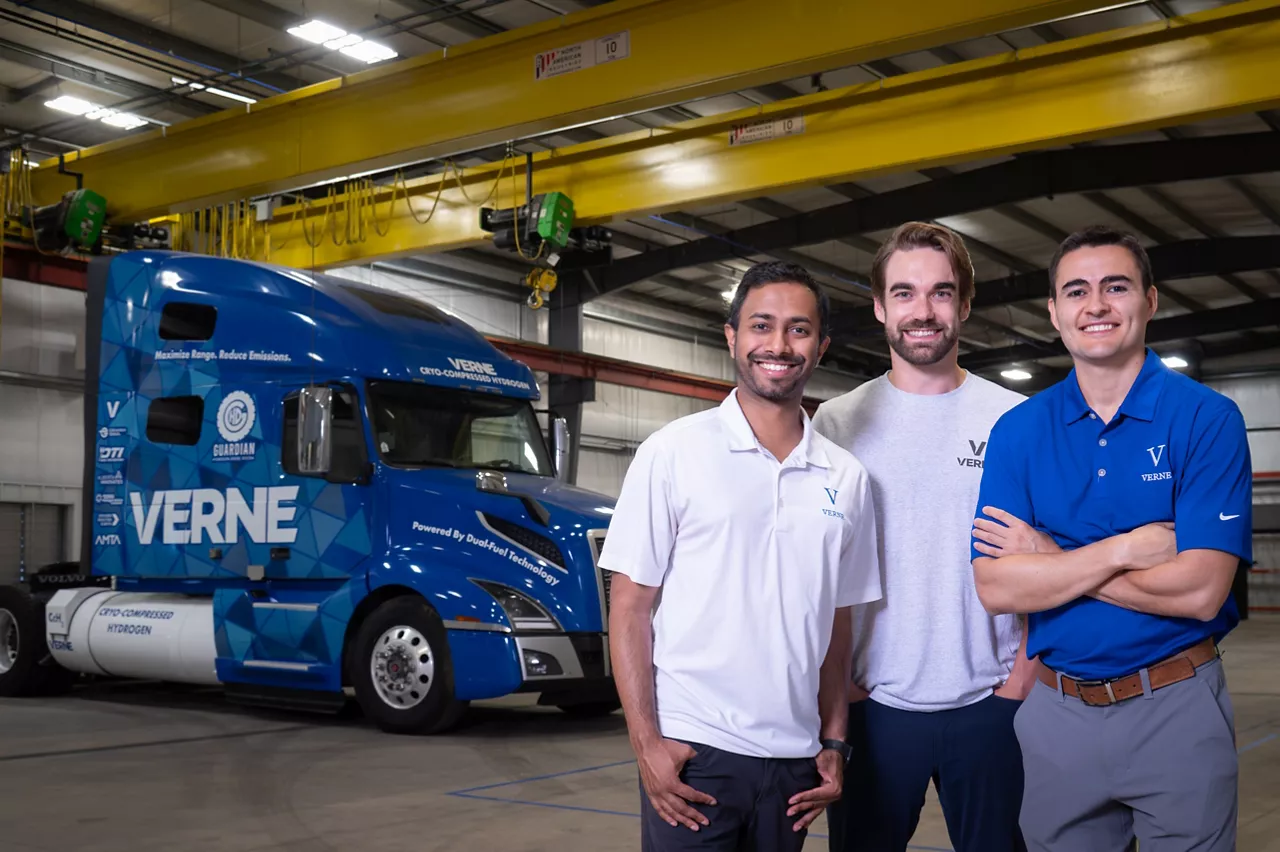Verne was awarded funding through the U.S. Army Energy Demand Reduction and Clean Energy Tech SBIR program and will conduct feasibility analysis on cryo-compressed hydrogen vehicles
San Francisco, California, May 29, 2024 — Verne received an award to research cryo-compressed hydrogen (CcH2) vehicles for the U.S. Army. Hydrogen is an alternative fuel that can be generated on-site near the edge of operations, removing reliance on complex fuel supply chains and lowering all-in fuel costs. Cryo-compressed hydrogen is a novel form of hydrogen storage that maximizes hydrogen density, extending vehicle range without adding extra weight. During this project, Verne will work with the U.S. Army Ground Vehicle System Center and vehicle manufacturers to gather requirements and model the operational impact of adopting CcH2 solutions for medium and heavy-duty vehicles used in U.S. Army operations.
The U.S. military is the largest consumer of oil in the world, using more than 100 million barrels of oil annually. In 2021, the U.S. military emitted 51 million metric tons of CO2, greater than the total emission footprint of more than 70% of countries. However, the U.S. military has placed a strong emphasis on decarbonizing their operations: the U.S. Army released their first comprehensive Climate Strategy in 2022, with the goal of reaching net zero emissions from Army installations by 2045. Investing in clean energy research will enable the U.S. Army to achieve these climate targets, develop supply chain resiliency, and remain at the cutting edge of important frontier technologies like CcH2.
The U.S. Department of Defense has long been a leading driver of innovation, responsible for developing critical technologies with benefits extending far beyond military applications. The U.S. Department of Defense drove early semiconductor development in the 1950s, created the precursor to the modern internet in the 1960s and built the first Global Position System (GPS) in the 1970s. The U.S. Department of Defense is now leading development of alternative energy technologies to increase operational capabilities and meet their energy targets.
Verne’s cryo-compressed hydrogen technology involves cooling and compressing hydrogen to achieve the maximum hydrogen density at 73 g/L internal density, a 33% improvement over liquid hydrogen and an 87% improvement over traditional 700 bar compressed gas hydrogen. This best-in-class energy density leads to greater range and payload, enhancing operational capabilities.
“The U.S. Army has been responsible for advancing many critical technologies and Verne is excited to work together to advance cryo-compressed hydrogen,” said David Jaramillo, Verne Co-founder and CTO. “Verne’s mission is to provide zero-emission technologies that do not require costly performance trade-offs, and this is a vote of confidence that the U.S. Army believes CcH2 can meet their strict performance standards.”
Decisive Point, a venture capital firm with expertise in navigating the federal and commercial markets will provide strategic support on this award: “The DoD continues to fund technologies that enable its platforms to leverage new fuel sources like hydrogen to provide an advantage when it comes to resilient supply chains and long-range capability,” said Eric Horan, Partner at Decisive Point and former Government Contracting Officer for the U.S. Navy.
Since its founding in 2020, Verne has been dedicated to providing high-density hydrogen storage systems that meet the needs of heavy-duty transportation. Last year, Verne announced a CcH2 storage record during stationary demonstration of a 29 kg storage tank at Lawrence Livermore National Laboratory and completed the first testing of their CcH2 storage system on-board a vehicle. Verne recently announced a project to demonstrate the first CcH2 Class 8 Truck. Verne is working with key trucking fleets and OEMs, as well as leading partners across aviation, ports, mining, and hydrogen distribution & refueling.
About Verne
Verne was founded in 2020 to develop high-density hydrogen storage solutions required to decarbonize heavy-duty transportation. Verne’s platform unlocks zero-emission operations in sectors including trucking, aviation, port vehicles, mining and hydrogen distribution. Verne is financially supported by leading commercial entities, including Trucks Venture Capital, Collaborative Fund, Amazon’s Climate Pledge Fund, United Airlines Ventures Sustainable Flight Fund, Caterpillar VC, and Newlab. Verne is also supported by Breakthrough Energy Fellows, the Department of Energy’s ARPA-E, The U.S. Army, Alberta Innovates and other agencies. For more information, visit www.verneh2.com.
Company contact: contact@verneh2.com


.png)


